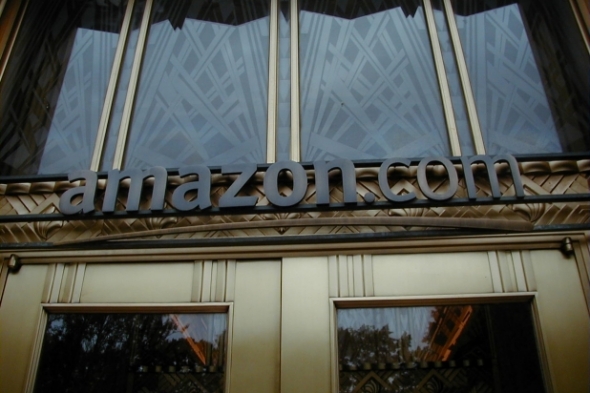In January 2013, LIMRA reported that 90% of industry executives it had surveyed believe that insurance companies will continue to form strategic alliances with “non-traditional organizations” to expand distribution. The example cited was MetLife’s trial alliance with 200 Wal-Mart stores. Then Accenture’s “Customer-Driven Innovation Survey” found that more than two-thirds of customers would consider purchasing home, auto and life insurance from businesses other than insurers—23% were open to purchasing from online service providers like Amazon or Google (which acquired auto insurance aggregator BeatThatQuote.com way back in 2011 in the UK).Amazon has proven leadership as an e-commerce distributor, while Google is seen primarily as an information organization, so I would like to elaborate exclusively on the compelling reasons for insurers and Amazon to create a distribution model to match ever-evolving customer demands.
Customer demands
Every information source and every analyst report on insurance in the recent past points to changes in customer’s preferences. Generation X, Generation Y and Millennials prefer doing business with companies that provide:
- Convenience of on-demand buying and self-service, predominantly through digital channels such as web and mobile.
- Personalization of product and service delivery, including helping the customer choose the right product.
- Building trust through transparency in pricing, simplified products and clear articulation of benefits.
So, insurers must innovate in personalizing products, providing transparency in the value of products and services and demonstrating excellence in on-demand distribution. Innovation must also touch “moments of truth” such as claims and policy changes. It is also critical that the distribution lifecycle should be an iterative process to consistently review the value of benefits and help customers fine tune the products and services they purchase.
Insurers are lagging
Insurers have been consistently lagging in product innovation and trying to catch up through distribution. In P&C, all the personal product lines are commoditized. In life insurance, term-based products are commoditized. It is true some product personalization has been in the market for some time, such as pay-as-you-driving with telematics in auto insurance (led by Progressive, which saw a boost in profitability). Yet personalization has not reached its potential because of multiple inhibiting factors both internal (lack of aggregated information on risk, etc.) and external (privacy concern, etc.). The lack of product innovation shifts the responsibility of differentiation to distribution.
Manufacturing and retail have been pioneers in showing how boring commodity products can be differentiated through aspects of distribution such as packaging and channel selection. A recent example is Coca Cola, which has been managing differentiation based on targeted customer segment and channel (Wal-Mart vs. Walgreens vs. Costco, etc.) and has moved one step closer to the customer by signing a 10-year agreement with Green Mountain Coffee Roasters to bring vending machines into kitchens.
In the past, insurance has learned from retail about channels. GEICO, which was known for selling online, has set up brick-and-mortar agency centers by responding to the fact that customers want to shop online but buy from agents. Allstate, where agents lead distribution, not only built online sales support but went one step further, acquiring Esurance to become a multi-channel insurer.
Now, with retail defining and moving toward omni-channel selling, through what is known as “device-independent e-commerce,” it is time for insurers to piggyback on Amazon, which is on the leading-edge of the emerging distribution model.
Amazon ready to sell insurance
Currently, Amazon merely sells books on insurance, has a limited selection of extended warranties for electronics and provides sponsored links for insurers. But to start selling insurance much more seriously would be easy for Amazon. It could expand its extended warranties and offer valuable personal property (VPP) insurance, as it sells the products that are insurable under VPP. It would also be logical for Amazon to extend and be an aggregator for auto, renters, homeowners and life insurance.
The critical question is: “Will customers want to buy from Amazon when there are other aggregators available?” For customers, having reusable information reduces effort, so VPP insurance would be a natural for Amazon. It gets more complex (and interesting) when analyzing the success factors involved in selling complex products such as auto, renters, homeowners and life insurance.
Few insurers can share data and process across products. Still fewer can share across channels. Aggregators are set up as silos. But Amazon’s shopping cart can provide ease of buying, plus reusability of data across channels (web and mobile) and products. The shopping cart actually can resolve the commodity dilemma of insurers through bundling. It can take the customers’ experience to the next level.
Amazon’s analytics-driven capabilities, such as detailed product features and comparisons (price to value of benefits), product reviews, questions and answers, “customers who bought this also bought,” “customers who viewed this also viewed” and offers for the week can be customized for insurance to offer suitable product advice to customers. Insurers do not have such an integrated view because of internal challenges in the effective use of data.
Amazon’s comparisons on features and pricing could improve transparency for customers. The reviews, Q&A and “similar customers” features would provide advice. “Weekly offers” would help customers continually review and tweak their insurance coverage. Hence, Amazon could become the channel of choice for all consumer insurance needs.
Sacred relationship, and not the competition, is the way to go
While Amazon could become consumers’ “trusted advisor,” Amazon also provides a jump start to insurance companies that want to build on the ready availability of its technology infrastructure, reducing their investment and time to market. Amazon might cooperate with innovative insurers to be an aggregator because that would provide immediate and direct profits from its platform.
Amazon would also generate synergies among its various product lines—for instance, when someone starts buying baby products, Amazon might offer life insurance. For existing homeowners policyholders, it could offer products, such as power generators, to help them get prepared and avoid loss during natural disasters such as hurricanes and ice storms. The customer’s engagement with Amazon would increase, leading to greater share of wallet through cross-selling and up-selling opportunities.
So, an insurer that provides coverage through Amazon would be creating a win-win-win—for Amazon, for customers and, of course, for itself.








